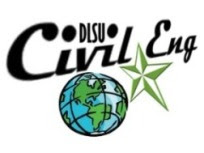Article
by: Anna Mendoza
Photos
by: Anna Mendoza, Jay Tongco and Aira Ong
This
year’s Tokyo Tech Student Exchange Program was held from August 25 to September
3 in Tokyo, Japan with a total of 44 participants; 35 Civil Engineering (CIV)
students and 9 Manufacturing Engineering and Management (MEM) students. The
10-day student exchange program was composed of different socio-cultural
activities and site visits which exposed the participants to the culture and technological
innovations of the country. The exchange program also aimed to strengthen ties
between De La Salle University (DLSU) and Tokyo Institute of Technology (TIT). Among
those who accompanied the students during the exchange program were: Engr. Ronaldo
S. Gallardo, (Associate Vice Chancellor for Facilities Management), Dr.
Lessandro Estelito O. Garciano, (Civil Engineering Dept. Chair), Dr. Nilo T.
Bugtai (Manufacturing Engineering and Management Dept. Chair), Engr. Cheryl
Lyne C. Roxas (Civil Engineering Dept. OJT Coordinator), and Tokyo Tech
Philippines office staff, Mrs. Ioulany Esguerra and Ms. Dianne Buagas.
DLSU participants
accompanied by Engr. Gallardo, Dr. Garciano, Dr. Bugtai, Engr. Roxas at Haneda
Airport
Part
of the exchange program was a visit to EBARA Corporation, a manufacturing
company which makes environmental and industrial machinery such as pumps and
turbines. The tour started with a presentation about the company’s history,
profile and their leading edge technologies designed to provide superior
service to different areas around the world. The participants, accompanied by
Professor Takahashi, were also given a chance to tour the facilities and
warehouses of the company where they were able to witness the different processes
involved in the manufacture of the pumps and turbines.
DLSU participants and
professors accompanied by Professor Takahashi at EBARA Corporation
Presentation of tokens of
appreciation to EBARA Corporation
The
following day was allotted for the Tokyo Institute of Technology campus tour
which was headed by Professor Yamashita along with Tokyo Tech students. The
first agenda of the tour was the presentation of the Tokyo Tech Supercomputer Ubiquitously
Accessible Massstorage Environment or TSUBAME 2.5 which is a large-scale
supercomputer that provides computational modeling, simulations and storage
resources for research at TIT and selected projects at outside research
institutions. The participants were then toured around the TIT Library or the
Cheesecake Library, named due to its architectural design which is similar to
that of a cheesecake. The library comprises of underground stacks and an
aboveground study hall. One of the notable features of the library is the
powered mobile shelving which helps increase storage capacity and is fitted
with enhanced safety features. At the end of the day, a welcoming party was
held wherein both DLSU and TIT students and professors were able to socialize
with each other.
Professor Yamashita welcoming
the participants to Tokyo Institute of Technology
DLSU students at the Tokyo
Tech welcoming party
The
participants were also given a chance to visit some of the main research
facilities of the Port and Airport Research Institute (PARI) such as the
long-term exposure experiment facility, large-scale testing facility,
underwater 3D shake table, laboratory for coastal ecotoxicology and large
hydro-geo flume. The long-term exposure experiment facility is where seawater
is used to evaluate the deterioration and long-term durability of materials
such as concrete, steel, anti-corrosive and wood. The large-scale testing
facility is for structural loading tests on large-scale models which allows
investigation of the mechanical properties of post, coast and airport
structures. The laboratory for coastal ecotoxicology examines how chemical
substances existing in coastal areas behave in the ecosystem. The large
hydro-geo flume and underwater 3D shake table are large-scale facilities which
provide simulation of disasters such as tsunamis and earthquakes, respectively,
for investigation of ground motion and structure destruction.
Underwater 3D shake table
facility
Large hydro-geo flume
facility
DLSU and Tokyo Tech
students and professors at PARI
The
other days of the exchange program were allotted for the students to explore
and experience the culture and traditions of Japan. Some of the sites visited
were the Meiji Jingu Shrine in Harajuku, Shibuya, Meguro Church, Asakusa, Tokyo
Skytree in Oshiage and Odaiba. The program also exposed the students to the
progressive technology and efficient systems present in the country. From
Asakusa to Odaiba, the participants rode the Tokyo Cruise and were able to see
the different advancements in engineering and architecture in Japan, from the
buildings to the bridges – all these, a marvel to the eyes.
DLSU students and
professors at Meiji Jingu Shrine
DLSU participants and
professors at Meguro Church
The
Japan Socio-Cultural Exchange Program served as an avenue for holistic
development of the students by exposing them not only to the technological
advancements of the country but also to their rich culture and traditions. Overall,
it was an unforgettable experience that brought about many learnings and
realizations - learnings that will hopefully be applied by these future
Lasallian civil engineers for God and country.











.jpg)





No comments:
Post a Comment